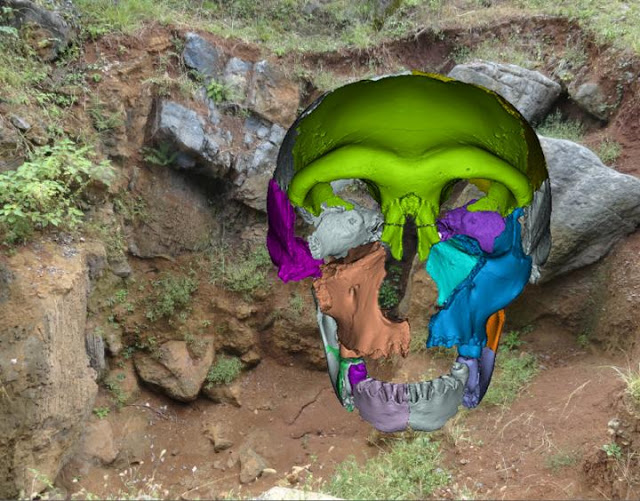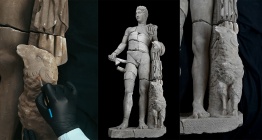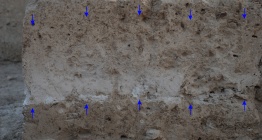In an article published in Proceedings of the National Academy of Sciences (PNAS), researchers describe the remains of Middle Pleistocene humans dating to about 300,000 years ago which were found in Hualongdong (HLD), China.

A team of scientists led by LIU Wu and WU Xiujie from the Institute of Vertebrate Paleontology and Paleoanthropology (IVPP) of the Chinese Academy of Sciences reported the first ever Middle Pleistocene human skull found in southeastern China, revealing the variation and continuity in early Asian humans.
Excavations in Middle Pleistocene cave deposits in southeastern China yielded a largely complete skull that exhibits morphological similarities to other East Asian Middle and Late Pleistocene archaic human remains, but also foreshadows later modern human forms.
Fossil evidence for human evolution in East Asia during the Pleistocene is often fragmentary and scattered, which makes evaluating the pattern of archaic human evolution and modern human emergence in the region complicated.

WU Xiujie and his colleagues reported the recent discovery of most of a skull and associated remains dating to around 300,000 years ago in Hualong Cave (Hualongdong). The features of the Hualongdong fossils complement those of other East Asian remains in indicating a continuity of form through the Middle Pleistocene and into the Late Pleistocene.
In particular, the skull features a low and wide braincase with a projecting brow but a less prominent midface, as well as an incipient chin. The teeth are simple in form, contrasting with other archaic East Asian fossils, and its third molar is either reduced in size or absent.

According to the authors, the remains not only add to the expected variation of these Middle Pleistocene humans, recombining features present in other individuals from the same time period, but also foreshadow developments in modern humans, providing evidence for regional continuity.
The findings were published in Proceedings of the National Academy of Sciences (Further Reading: https://www.pnas.org/content/early/2019/04/24/1902396116).
Chinese Academy of Sciences [April 30, 2019]








 İsfahan Ali Minaresi Selçuklu Dönemi'nin ihtişamını yınsıtıyor
İsfahan Ali Minaresi Selçuklu Dönemi'nin ihtişamını yınsıtıyor  Kızılırmak Deltası Kuş Cenneti'nde leylekler yuvalarına erken dönüyor
Kızılırmak Deltası Kuş Cenneti'nde leylekler yuvalarına erken dönüyor  Pamukkale ve Hierapolis Antik Kenti'ni 25 yılda 37 milyon kişi ziyaret etti
Pamukkale ve Hierapolis Antik Kenti'ni 25 yılda 37 milyon kişi ziyaret etti  Bolu Valiliği, tabiat ve milli parkların korunmasına yönelik önlemleri açıkladı
Bolu Valiliği, tabiat ve milli parkların korunmasına yönelik önlemleri açıkladı 




